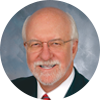I recently read Steve Jobs' biography, and though a long book, I highly recommend it. As I was reading it, I couldn't help but think about how much he changed our world. He ran into all kinds of flack along the way; he was criticized and torn apart by popular media many times – but he refused to conform to the mediocrity of the electronic world.
A big debate is ongoing in chiropractic about whether we should use medication as part of our therapy. Just as Steve Jobs challenged the system, I feel compelled to ask, "If the evidence for manipulation surpasses the evidence supporting drugs and surgery, why would we use an inferior approach?" Conforming to the system is not always in the best interest of our patients; rather, we should use the therapy that's proven to provide the best results. At the least, we should allow for the fact that patients aren't always "one size fits all" and customizing the treatment to fit the patient's needs is the right approach.
I remember in 1964 when I started practicing, there were a number of DCs convinced that chiropractic was going to be eliminated; certainly not something a young, enthusiastic practitioner wanted to hear. Here we are nearly five decades later and chiropractic is still going strong. The practitioners who have stayed focused on their patients are succeeding. I make this statement from a unique observation point, as I receive weekly feedback from DCs attending seminars who are thriving in practice, despite regulations and economic factors. Their prosperity is evidence that we have an effective form of treatment for the spine and extremities, and that the demand for chiropractic care is real.
Steve Jobs' vision created unprecedented demand for new ways to communicate that matched our personal interests; it also made Apple one of the most profitable companies in history. Demand for chiropractic care will continue to grow as long as we emphasize the interests of our patients. Let's take the Steve Jobs approach by not conforming. Rather, let's keep doing what we've done all along – placing the patient above all else.
Click here for previous articles by Arlan Fuhr, DC.





